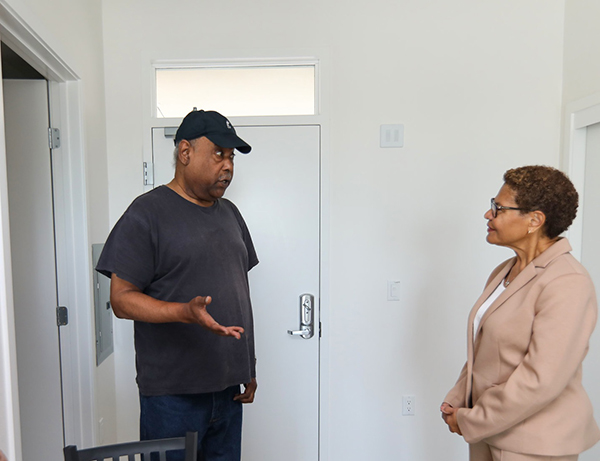By Earl Ofari Hutchinson
Contributing Columnist
When I posted a recent photo of a mini-homeless encampment at the back end of a shopping mall on my Facebook page, the responses came in fast and furious.
Some expressed anger at me for taking and posting the picture — calling it an inappropriate and insensitive way of spotlighting the homeless.
Others decried the homeless setting up camp in the Baldwin Hills area. Still others complained that the encampment posed the hazards of poor sanitation, vagrancy and a crime increase.
But most of the respondents were compassionate, sympathetic and demanded that city and county officials and private agencies do much more to solve the problem. All agreed though that homelessness in L.A. was a tormenting problem and a colossal stain on the city.
The betting odds are that it will get worse. In early 2024, the Los Angeles Homeless Services Authority will conduct its annual count of the homeless in L.A. The agency almost certainly will report another surge in the homeless numbers. It will not be a surprise.
As I have written in prior columns on the issue of L.A.’s homeless crisis, the harsh fact is that there are crucial nearly intractable reasons why homelessness continues to be a chronic crisis.
The great myth is that the homeless are mostly a horde of down and out, mentally challenged drug and alcohol abusers. Certainly, many of the homeless fit into that category. But many don’t. Homelessness is not about wayward, impoverished people. It’s a deep structural problem.
It’s fueled in large part by unchecked, unaffordable high-end development. Drive down any Los Angeles street and you will see yet another apartment or townhouse development tossed up. There’s a steep price for that.
These projects displace thousands of moderate to lower-income people and virtually consign many of them to the streets. This unchecked development is facilitated by the L.A. City Council that has virtually given the company store away to high-end developers.
While there is the minimal requirement that some set aside a small number of units as “affordable,” that’s a small price to pay for getting their high-end project approved. One of many sobering experiments to end homelessness confirmed how dogged the problem is.
In 2021, the Canadian government issued a report that after spending billions in public money to wipe out homelessness in the country, they didn’t know if the money made any dent in the problem. The government spending aimed to cut chronic homelessness in Canada in half by 2028. That hasn’t happened.
The takeaway from this experience was that simply tossing money at the problem of homelessness, no matter how much and how well-intentioned, is not in and of itself the answer. The glaring fuzziness about whether tossing money at the problem accomplished anything sparked much finger pointing among Canadian politicians.
Some accused the government of doing nothing to rein in the massive construction of high-ended luxury and upper middle class housing development projects that have dumped thousands of persons on Canada’s streets. The failure to put any appreciable checks on housing development that prices all but the wealthy and well-to-do out of the housing market guarantees that the problem of homelessness will only get worse, no matter how much public money the government spends to try to get a handle on the problem.
Homelessness has been the runaway number one public policy worry of L.A. officials for almost two decades. Every mayor and city official has wrung their hands with promises and projected solutions to get rid of the tent encampments that are tantamount to a city of the dispossessed within a city in Los Angeles.
L.A. officials have spent tens of millions of taxpayer dollars, tossed up a few encampments and makeshift housing here and there, and repeatedly demanded taxpayers cough up millions on the pledge that their dollars would be used to end homelessness. All the while many of L.A. streets, parks, freeway sidings and underpasses look like Kolkata, India.
It will take a mix of ramped-up approaches — strategic spending, land-use changes, housing subsidies and the expansion of support services — to dent the problem.
The monumental challenge is to craft and push the City Council to enact a solid land-use plan to rein in upscale development. That means taking checkbook politics out of the development process while ensuring the building and subsidizing of more affordable housing.
It’s a daunting task given the outsized power of corporate developers to get just about anything they want from the L.A. City Council with minimal checks and controls. The soon to be released 2023 housing authority report on the homeless surge will reconfirm that homelessness will not magically vanish without a total commitment to not just put-up new housing but housing that people can afford.
It also will sadly reconfirm that there is no will by city officials to make that commitment. That means only more handwringing over the problem by a puzzled, angry and frustrated public.
Earl Ofari Hutchinson is an author and political analyst. He is the host of the weekly Earl Ofari Hutchinson Show from 9 to 10 a.m. Saturday on KPFK 90.7 FM Los Angeles and the Pacifica Network.












